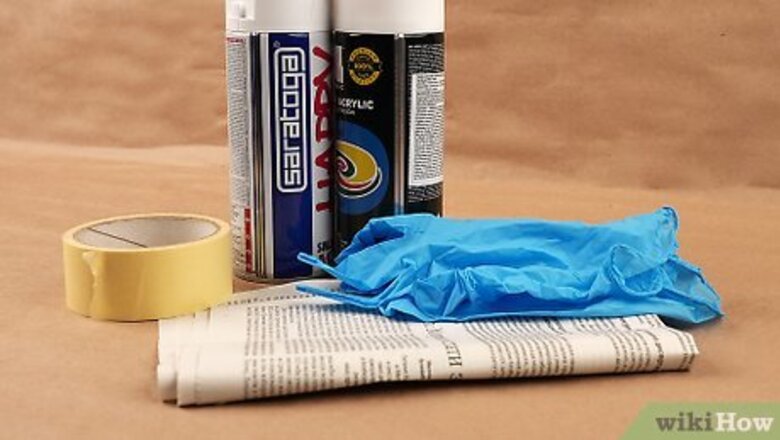
views
Getting Started
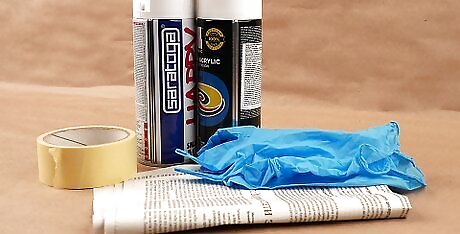
Assemble your materials. Spray paint is available in dozens of brands and hundreds of different colors, so check out your options to see what will meet your project’s needs. You will also need a few other supplies to do a professional spray paint job. Before you begin, you will need: Spray paint in the color(s) of your choice Primer Newspaper, drop cloth, or a plastic tarp to protect the ground and other items around the item you are painting. Painter’s tape Disposable gloves, safety glasses, and a ventilator mask
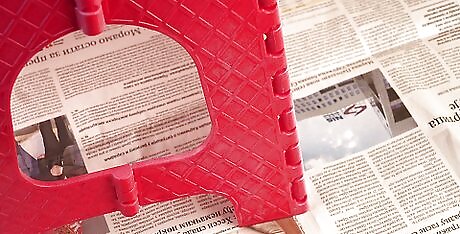
Prep your work area. Whenever you spray paint, you should always work outdoors in a well-ventilated area because the fumes from the paint can cause respiratory damage. Keep in mind that spray paint won’t adhere well if it is too cold or wet outside, so wait for a time when humidity is below 65% and it is sunny and warm. Place your newspaper, drop cloth, or tarp down. If you are working outside, you can use weights (like rocks) to keep your protective materials from blowing around in the wind. Be sure to spread your protective materials far enough out, otherwise your yard or driveway may have end up with a light misting of color from the paint. Tape off any areas you don’t want to paint. Be sure the edges are sealed well to the surface to prevent paint from leaking underneath.

Consider using sawhorses to suspend your item. If you are painting an object that will sit well on sawhorses, then you may want to use these to suspend the item in the air. This will help to make it easier for you to spray paint the item because you won’t have to be bending over as much. Having the item up on sawhorses will also make it easier to reach areas that might be hard to reach if the item is on the ground.
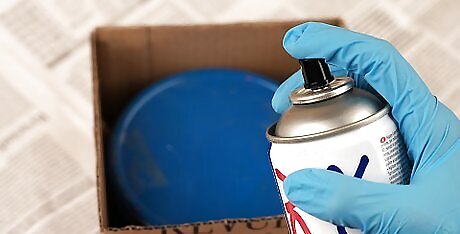
Create a paint box for a small item. If you have a small item to spray paint, then you can also try putting it inside of a box that has been placed on its side. Then, you can spray the paint into the box to spray paint the item and this will reduce the chances that paint will end up on nearby surfaces. You can also put items on a small piece of cardboard or a turntable inside of the box to make it easier to turn the item around as you paint.

Clean the surface of your item. Paint won’t stick to surfaces that are dusty, greasy, or otherwise unclean. Take a few minutes to wipe off any debris that might be clinging to the surface of the material you will be spray painting. You can use a damp rag only or use a household cleaner to clean your surface if it is extra dirty. Just make sure to dry the surface completely before you paint it. If there is any sticky residue on the surface of your item, such as the remnants of a price tag sticker, scrape off the residue and then use a household cleaner to remove the rest.
Staying Safe and Using Good Technique
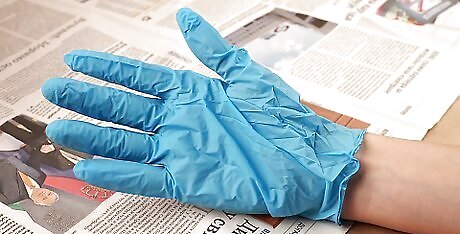
Put on your protective gear. Before you begin painting, make sure to put on your respirator mask, safety glasses, and disposable gloves. The safety goggles will help to protect you in case any of the paint blows back towards your face, and because spray paint is toxic, disposable gloves and a ventilator mask are necessary. Put these on before you do any painting. Respirators cost around $20 to $30, but this is much cheaper than a visit to the doctor for respiratory problems. Take a break if you feel even the slightest bit dizzy, queasy, or have difficulty breathing. Remember, your health and safety is always more important than your project.
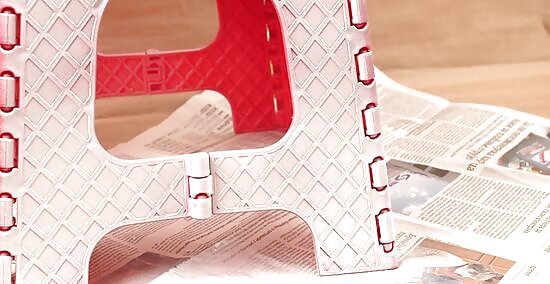
Apply primer first. Shake the can of primer for about three to four minutes before using it. Then, start spraying back and forth across the object you want to spray paint. Apply an even coating of primer to the entire object. Then, wait for the primer to dry completely. Check the primer can to find out how long it will take to dry. You only need to apply one coat of primer before spray painting an item. Applying primer before spray painting helps to ensure that your spray paint will have an even finish. Otherwise, you may need several coats of spray paint to get even coverage.
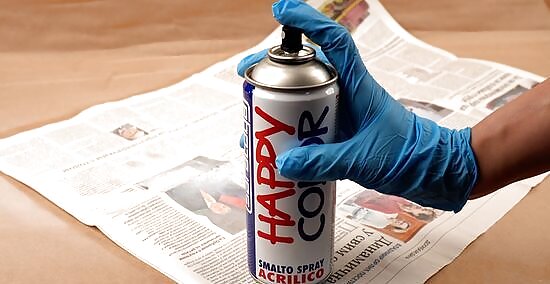
Shake the can well. Shake the paint can for about three to four minutes before you get started. This will help to ensure that the paint is mixed well, which is crucial to ensure that the color will be consistent for your project. Remember that you cannot shake the can too much, but you can shake it too little.

Do a spot test. Start by spraying your paint on an inconspicuous area of the item or on a scrap piece of wood or cardboard. This will give you an idea of how the paint will look when you spray paint your item. It will also give you a chance to test which distance gives you the desired effect.
Painting Your Item

Apply one coat over your entire project. Make sure to slowly sweep the paint across the surface of your project from left to right to get an even coat. Don’t aim the nozzle at just one spot. Also, make sure to overlap each of your passes slightly to ensure that you do not have gaps in between the areas you spray paint. Hold the can of paint about 8 inches (20.3 cm) away from your object, and move the can back and forth slowly at a rate of about one foot per second. Don’t apply a heavy coat because the paint may drip and be tacky longer. This will make it more likely that your paint will get smudged. Instead, apply multiple thin coats of paint to your project and let each coat dry completely before applying a new one. Keep in mind that the first coat will likely be splotchy and show the original color through the paint, but you will cover up any splotchy areas with the second coat of paint.
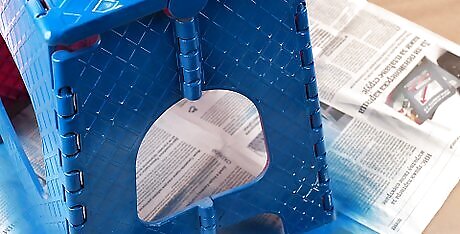
Allow the first coat to dry completely. Most spray paints require a minimum of 24 hours drying time before you can apply a second coat. Don’t rush this process. It is best to be patient and let the paint dry completely before applying any more paint.
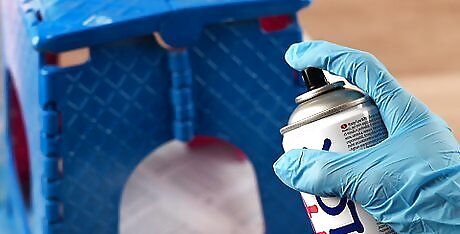
Apply a second coat. Although this might not always be necessary, applying a second coat will likely give you more even results. It will help to provide total coverage of your project and give you the brightest possible color.
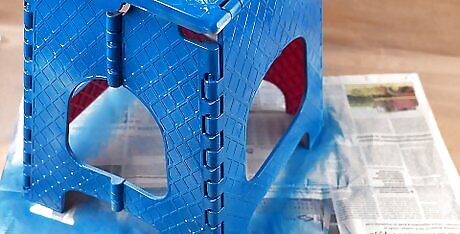
Let the second coat dry. Allow 24 hours for the second coat of paint to dry. Then, remove any tape that you used to protect certain areas of your item. Clean up any tarps or newspapers and store any extra paint in a clean dry area.
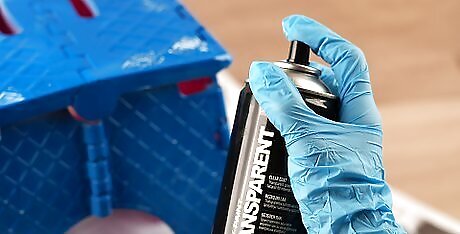
Apply a topcoat if desired. Most spray painted items do not require a topcoat unless they will be handled frequently. However, you can add a topcoat to any item that you spray paint. Get a clear spray paint topcoat and apply a light layer over your spray painted item after it has dried completely. Then, let the topcoat dry for at least 24 hours and apply another coat if desired. Wait for the last topcoat to dry completely before touching or moving the item. Keep in mind that applying a topcoat is optional. If you are happy with the finish on your item after applying the spray paint, then don't worry about applying a topcoat.


















Comments
0 comment